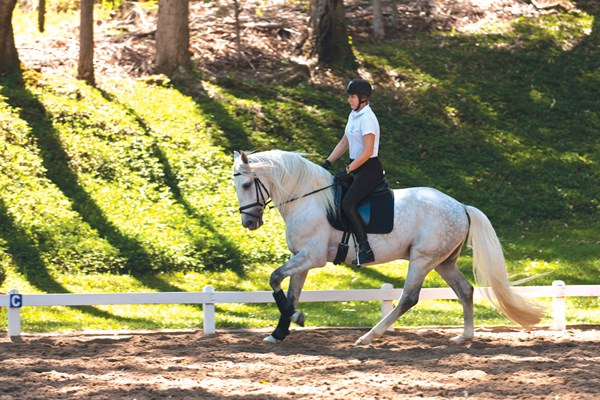If you ever get a chance to travel to Brazil, you must. The semi-tropical region around São Paulo is full of Lusitanos. This Portuguese baroque breed has captured the hearts of many a dressage rider, especially amateurs, because they are typically so gentle and uncomplicated to ride. Like other baroque breeds, the Lusitano is making its mark in dressage competition at all levels.

There are many farms in the region, but my stop was at Interagro, the largest breeder of Lusitanos in the world. Managing Director Cecilia Gonzaga runs (with apparent ease) what amounts to a small town: about 25 houses, a dozen barns, 75 employees and 1,000 horses.


Cecilia’s philosophy requires everyone to work quietly with the horses and take the time needed to bring them along. They are so willing that you have to be careful not to ask for too much too soon, she says. Head trainer Pia Aragao confirms this. The focus is dressage and driving, but the horses are also free jumped to gymnasticize them and improve their focus.

I discovered that not all Lusitanos are alike; traits and conformation canvary depending on the bloodlines. For example, the Andrade horses are larger and have long necks and backs (rectangular conformation). They are bred for powerful movement. The Veiga bloodline produces a more compact (square) conformation. Veigas are smart, quick and sensitive. Many of the Interagro horses are a combination of the two lines.

Cecilia says her father, Dr. Paulo Gonzaga, began Interagro in the 1970s and was instrumental in saving important bloodlines in Portugal during tough economic times there. She describes the passion that drives him to spend many hours studying the possibilities before deciding on the matches for the next year. “Genetics is not mathematics,” he is fond of saying.

Enjoy these photos from my excellent trip.













